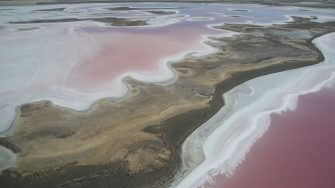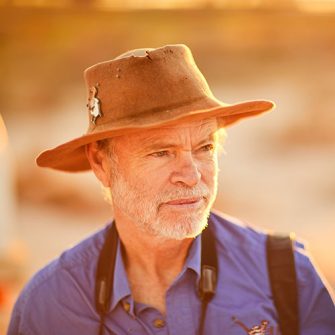
Date: Thursday November 2nd 2023
Project: Eastern Australian Waterbird Survey
Observers: Richard Kingsford (UNSW), John Porter (NSW DPE)
Trainees: Shelley Thompson (MDBA), Ashwin Rudder
Pilot: Thomas Clark
We headed northeast as the sun rose over the Lower Lakes, on our way to do a second count on the lower River Murray.
Passing the Lower River Murray at Murray Bridge on our way to survey near Berri
This section of the aerial survey of waterbirds is the riverland of the River Murray and is between Berri in South Australia and Wentworth in New South Wales, all along the Murray. We divide up the river into different sections based on the locks of the River Murray, from Lock 3 to Lock 10.
The Banrock Station Ramsar wetland which had hundreds of waterbirds including breeding Straw-necked Ibis
One of the locks on the River Murray that we use to specify the survey sections
Surveying the main channel of the River Murray from one of the locks
Next we go out from side to side of the main river channel to survey the different lakes and lagoons that come off the main part of the Murray. This is the important Ramsar-listed Chowilla floodplain in South Australia. There were certainly more pelicans, cormorants and Large Egrets in all of the major wetlands along this part of the River Murray, than we usually see.
One of salt lakes along the River Murray, with large numbers of Grey Teal, avocets and Australian Shelduck
This second survey was almost a mirror image of the survey that we had done on Tuesday. But we had previously managed to survey a couple of the lakes twice and that saved us a bit of time today, getting to Mildura a bit earlier than if we needed to repeat the whole survey.
After refuelling and a break we then headed south from Mildura, passing the Murray-Sunset National Park.
On the edge of the Murray-Sunset National Park, there are spectacular dry temporary salt lakes that very seldom flood
We made a beeline for Lake Hindmarsh. This is a huge freshwater lake in the semi-arid part of Victoria. It certainly had more waterbirds than I remembered the last time we surveyed it.
Surveying along the edge of Lake Hindmarsh
There were lots of Pacific Herons, the four species of cormorants, and Great Egrets. It is a treat to have such a diversity of different waterbirds, even though they weren't in great numbers. Probably less than 1,000 waterbirds in total.
We then headed across to Lake Tyrell. This vast salt lake has probably only had water once since 2007 during our surveys. It was dry today.
The different colour hues of the vast salt lake, Lake Tyrell
Salt on Lake Tyrell
Then it was across to the Kerang lakes in Victoria, near the town of Kerang. This string of lakes have a high diversity of different habitats, ranging from freshwater swamps, large freshwater lakes and different sized salt lakes. Some even supporting salt harvesting.
Surveying one of the temporary freshwater lakes, Lake Bael Bael
The shallow salt lakes always seem to have lots of waterbirds, including Grey Teal, Black Swans and coot. On the large permanent freshwater lakes, there are only a few waterbirds, mainly cormorants and darters. There were also a few Great Crested Grebes.
Surveying one of the small salt lakes, Lake Kelly
The most easterly part of this string of lakes, has three small freshwater lakes, including Middle Lake, which are always a good site for breeding Straw-necked Ibis, Australian White Ibis and Royal Spoonbills, concentrating in nesting groups.
Surveying Middle Lake with its breeding concentrations of Straw-necked Ibis and Australian White Ibis
Breeding concentrations of straw-necked ibis and Australian white ibis, Kerang Lakes

